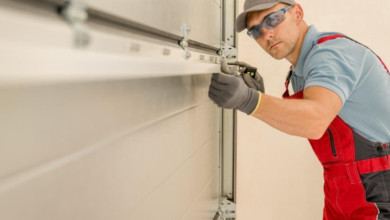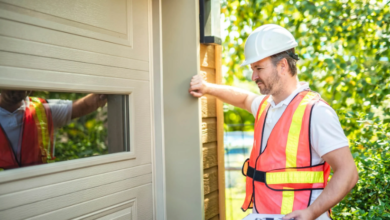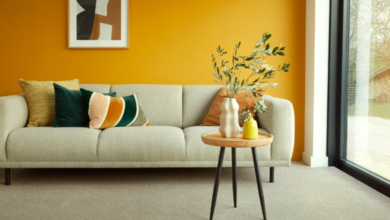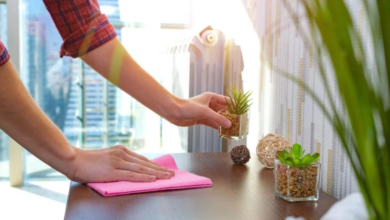The Hidden Power of Clean: How Sanitizing Your Home Protects Your Health
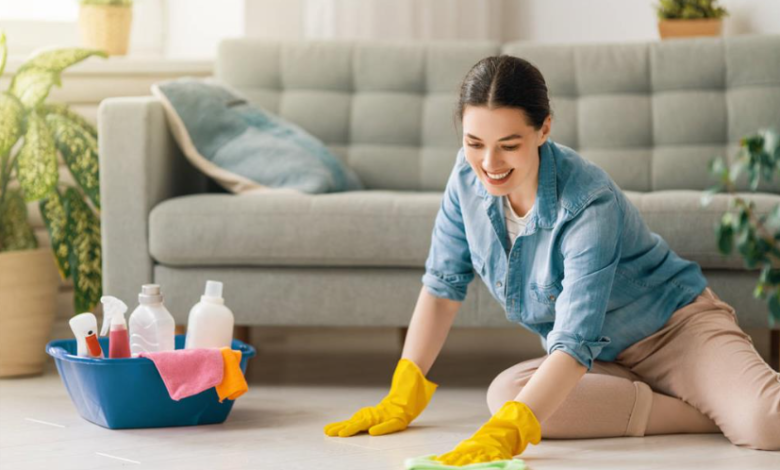
When most people think of cleaning, they picture sparkling countertops, fresh scents, and organized spaces. But beyond the visible shine lies something far more important – a cleaner that supports your health. Professional cleaning isn’t just about aesthetics; it’s a powerful way to reduce allergens, bacteria, and viruses that can quietly harm your well-being. That’s something Kansas City-based Sunflower Maids understands deeply. Their philosophy centers on cleaning for health first, beauty second – and that approach makes all the difference.
The Connection Between Clean Spaces and Better Health
A clean home doesn’t just look good – it feels better to live in. Dust, pet dander, mold spores, and germs accumulate in ways that can trigger allergies, worsen asthma, and spread illness. When surfaces are sanitized regularly, you’re not just wiping away dirt; you’re removing microscopic threats that can linger unseen.
Modern homes, with their tighter insulation and shared indoor air, trap pollutants easily. Without routine sanitizing, allergens settle on surfaces and recirculate every time you walk, cook, or open a window. That’s why cleaning for health has become a growing movement in home care – one that focuses on prevention, not just reaction.
Understanding the Difference: Cleaning vs. Sanitizing
It’s easy to confuse cleaning with sanitizing, but they’re not the same.
● Cleaning removes visible dirt, dust, and grime.
● Sanitizing goes a step further, reducing bacteria and germs to safe levels.
● Disinfecting is the most powerful of all, killing nearly all pathogens on surfaces.
When you sanitize, you’re targeting the microscopic elements that cause illness – everything from the cold virus to dust mites. Even a spotless-looking kitchen or bathroom can harbor hidden microbes if sanitizing isn’t part of the routine.
The Allergy Connection: Why Dust and Dander Matter
Allergens are sneaky. They build up slowly, embedding themselves in furniture, fabrics, and even walls. Common indoor allergens include:
● Dust mites: Microscopic pests that thrive in bedding, upholstery, and carpets.
● Pet dander: Tiny flakes of skin shed by cats, dogs, and other animals.
● Pollen: Brought indoors through open windows or on your clothing.
● Mold spores: Invisible particles that thrive in damp areas like bathrooms or basements.
Even in small amounts, these irritants can lead to itchy eyes, congestion, sneezing, and fatigue. For people with asthma or respiratory issues, a dusty home can feel like a daily challenge. Sanitizing surfaces helps control these triggers by removing the residue where allergens hide and multiply.
Germ Hotspots You Might Be Overlooking
Even the tidiest home has a few unexpected germ zones. Regularly disinfecting these areas can dramatically reduce the spread of illness.
1. Kitchen Counters and Handles
Raw foods, cutting boards, and even your phone can carry bacteria that linger on kitchen surfaces. Wiping them with an antibacterial cleaner after each use helps prevent cross-contamination.
2. Bathroom Fixtures
The bathroom’s humid environment makes it a perfect breeding ground for mold, yeast, and viruses. Pay extra attention to faucet handles, light switches, and toothbrush holders.
3. Electronics
Tablets, keyboards, and remotes are often touched dozens of times a day but rarely cleaned. A simple sanitizing wipe can make a big difference.
4. Doorknobs and Light Switches
These high-contact spots can host bacteria that spread easily between household members. Make it a habit to sanitize them weekly.
See also: 5 Landscaping Hacks That Save Homeowners Money
Choosing Safe and Effective Cleaning Products
Cleaning for health means choosing products that protect you, not expose you to harsh chemicals. Look for cleaners labeled EPA-approved or biodegradable, which kill germs without leaving harmful residues.
You can also make simple sanitizing solutions at home:
● Mix equal parts vinegar and water for general surface cleaning.
● Add a few drops of tea tree oil or lemon oil for natural antibacterial power.
● Use diluted hydrogen peroxide to disinfect sinks and countertops safely.
These options are eco-friendly and safe for kids and pets – proof that you don’t need toxic chemicals to maintain a germ-free space.
The Role of Routine: Why Consistency Counts
Cleaning once a week is great, but sanitizing regularly is where the health benefits truly add up. The more consistent your cleaning schedule, the less opportunity allergens and bacteria have to accumulate.
That’s where professional cleaners can make a big difference. Companies like geaux maids have built their reputation on detailed cleaning routines that focus not just on what you see, but on what you can’t. They understand that every home has different needs – from pet-friendly spaces to family homes with infants or allergy sufferers – and they tailor their process accordingly.
A professional service can also reach areas most people overlook: air vents, baseboards, ceiling fans, and under furniture. These hidden spots often trap dust and bacteria that affect air quality.
How Sanitizing Boosts Indoor Air Quality
Clean surfaces lead to cleaner air. Dust, mold, and pet hair eventually make their way into your HVAC system, where they circulate through your entire home. When you sanitize and vacuum regularly using HEPA filters, you’re actually improving the air you breathe every day.
Cleaner air reduces symptoms like coughing, headaches, and sinus pressure – and for children, it can even mean fewer sick days. Over time, this contributes to better sleep, higher energy levels, and an overall sense of wellness.
Healthy Cleaning Habits You Can Start Today
You don’t have to overhaul your entire cleaning routine overnight. Try starting with these small but powerful habits:
● Wipe down high-touch areas daily. Think doorknobs, switches, and handles.
● Wash bedding weekly. This keeps dust mites and dander in check.
● Vacuum and mop floors often. Use HEPA-filtered vacuums to trap allergens.
● Keep humidity below 50%. This discourages mold growth.
● Disinfect sponges and cloths. Microwave them for 30 seconds or replace often.
A few mindful steps go a long way in maintaining a truly healthy home environment.
Beyond Clean: The Emotional Benefits of a Healthier Home
A sanitized home isn’t just safer – it’s more peaceful. Knowing your space is clean and germ-free reduces stress and creates a sense of calm. You can focus better, rest easier, and enjoy time with loved ones without worrying about hidden health hazards.
When cleaning becomes part of your wellness routine, it stops feeling like a chore and starts feeling like self-care. That’s the heart of cleaning for health – creating an environment that supports your body and mind every single day.
Final Thoughts
Cleaning for health isn’t a trend – it’s a lifestyle choice with real, lasting benefits. By sanitizing surfaces and adopting safer cleaning habits, you’re investing in more than a tidy home; you’re protecting your family’s well-being. Whether you do it yourself or partner with trusted professionals, the result is the same: a cleaner, healthier, happier home.
